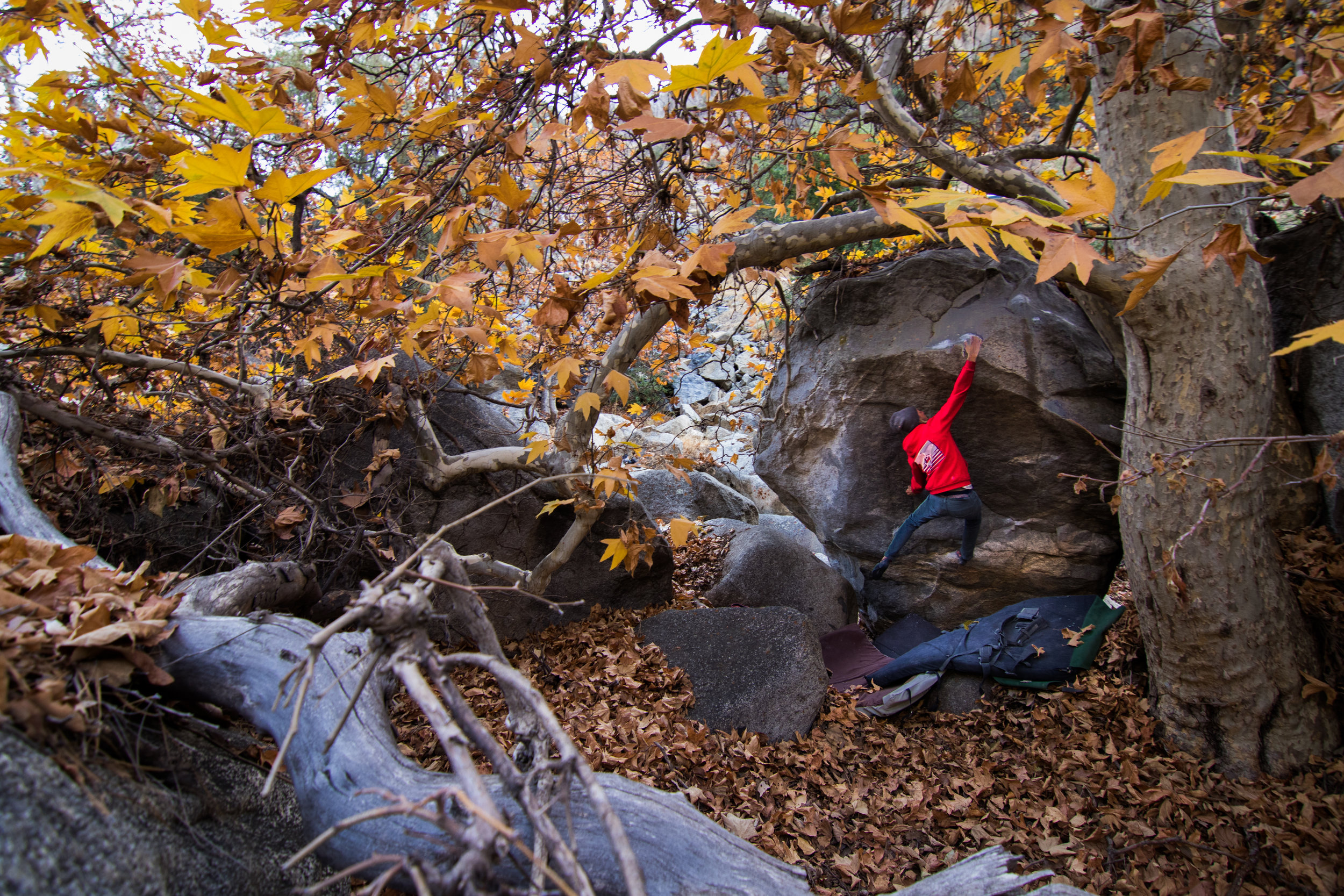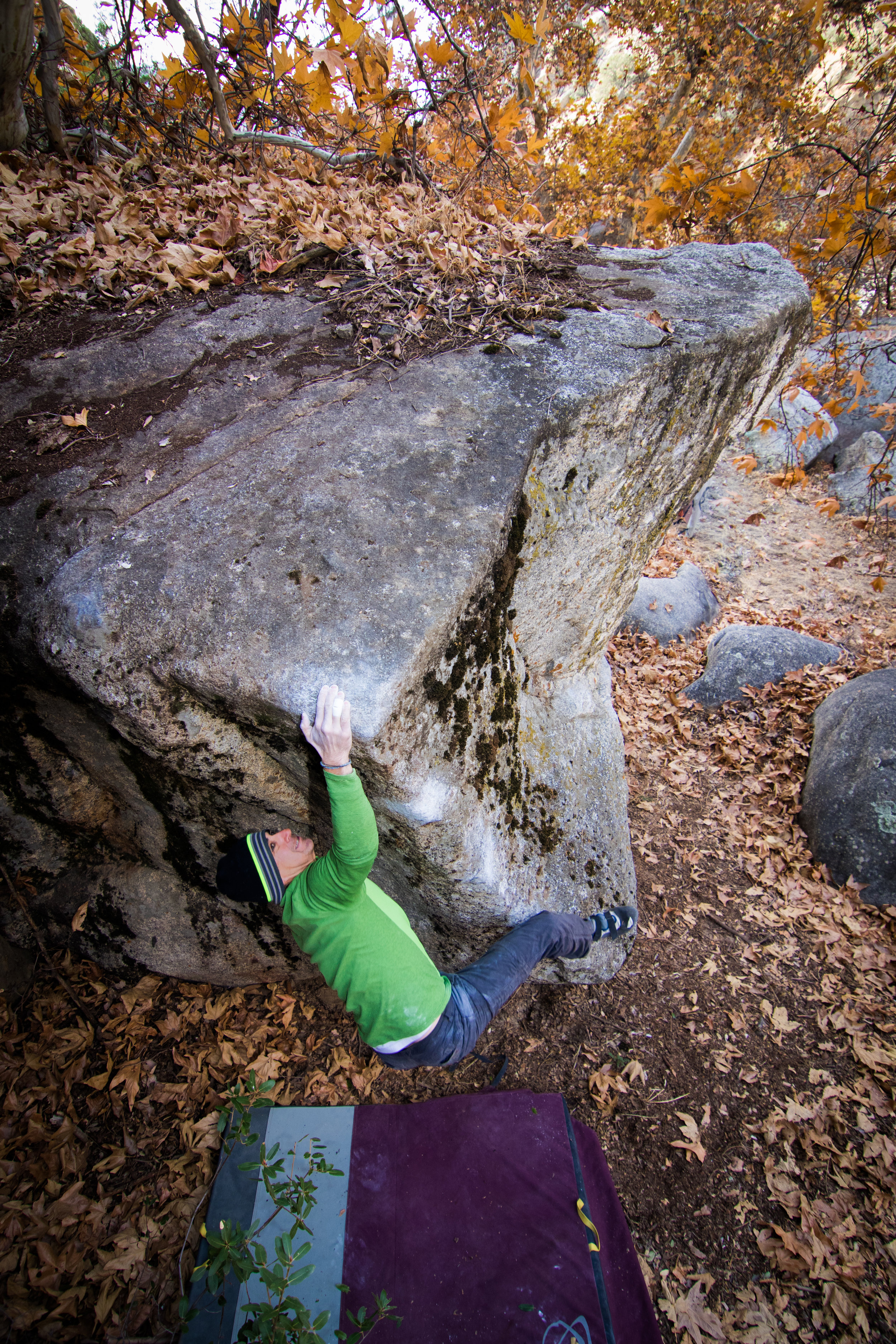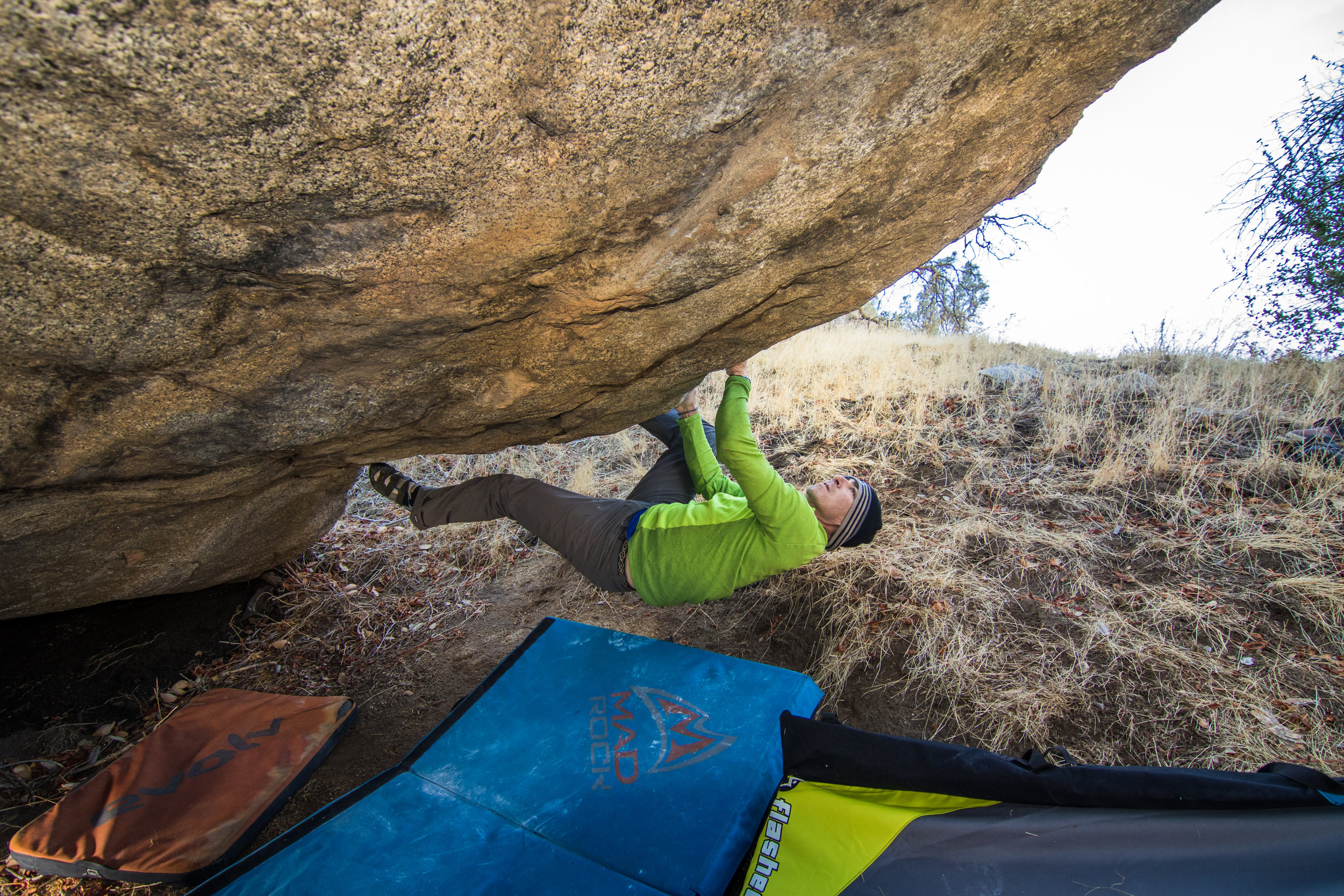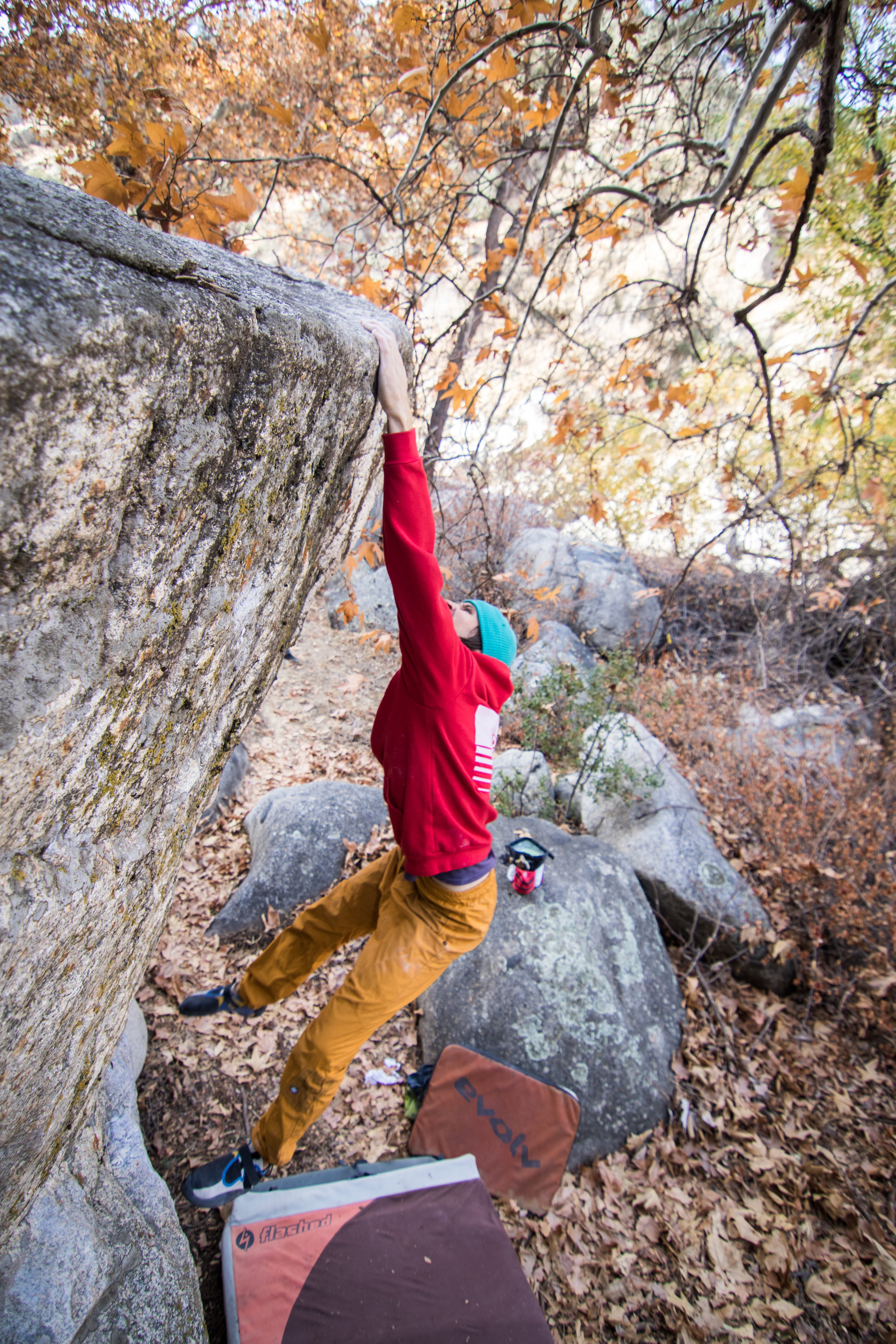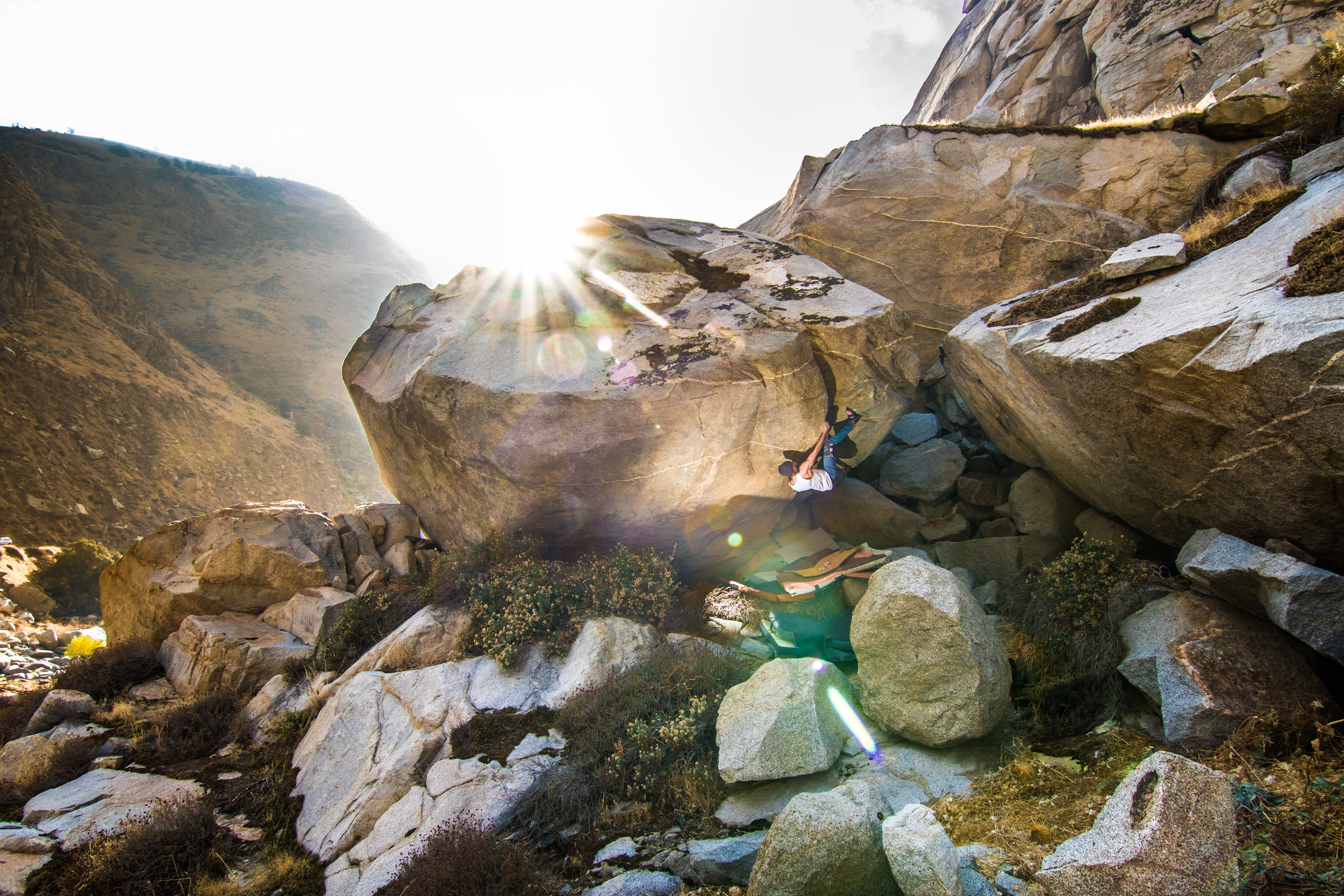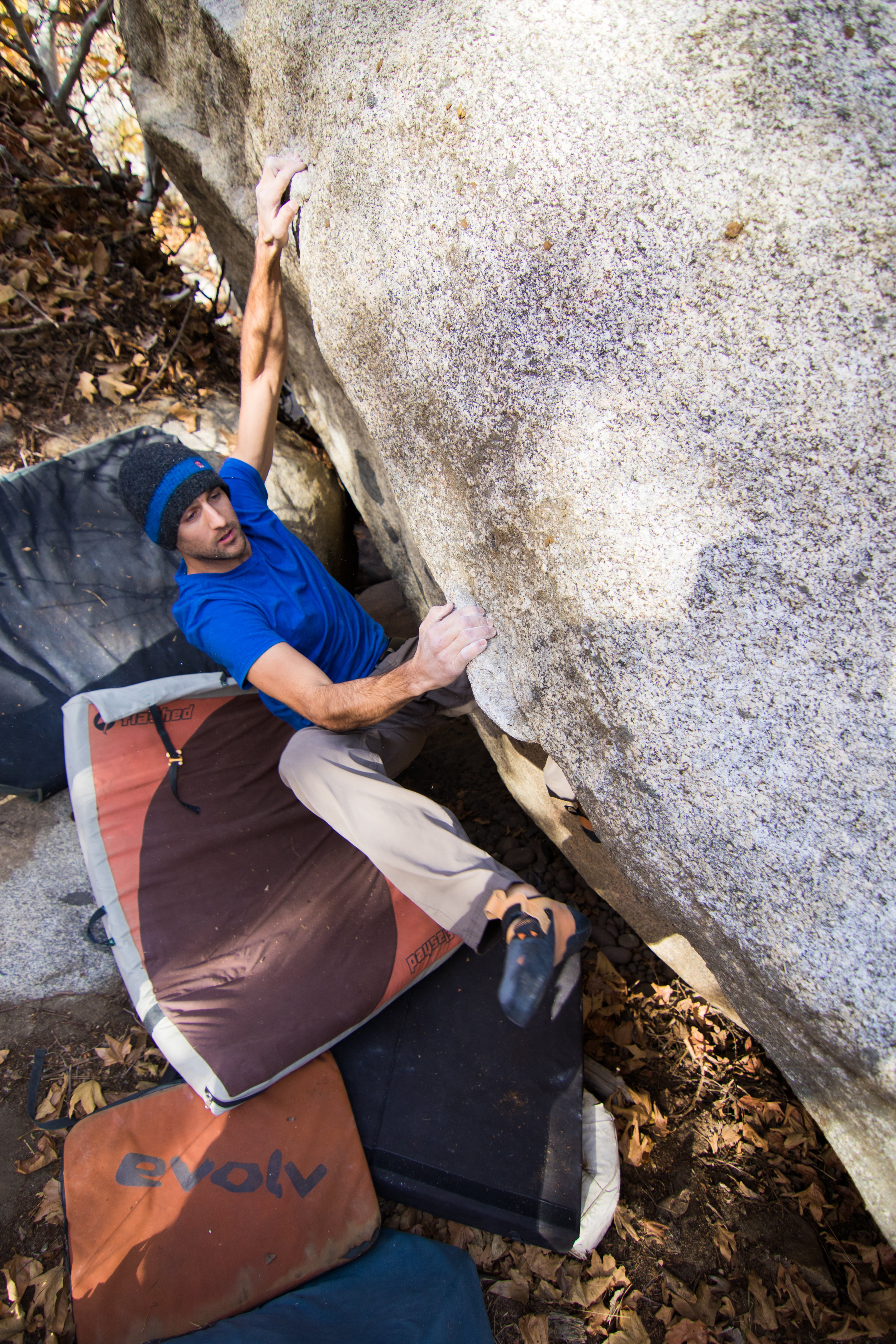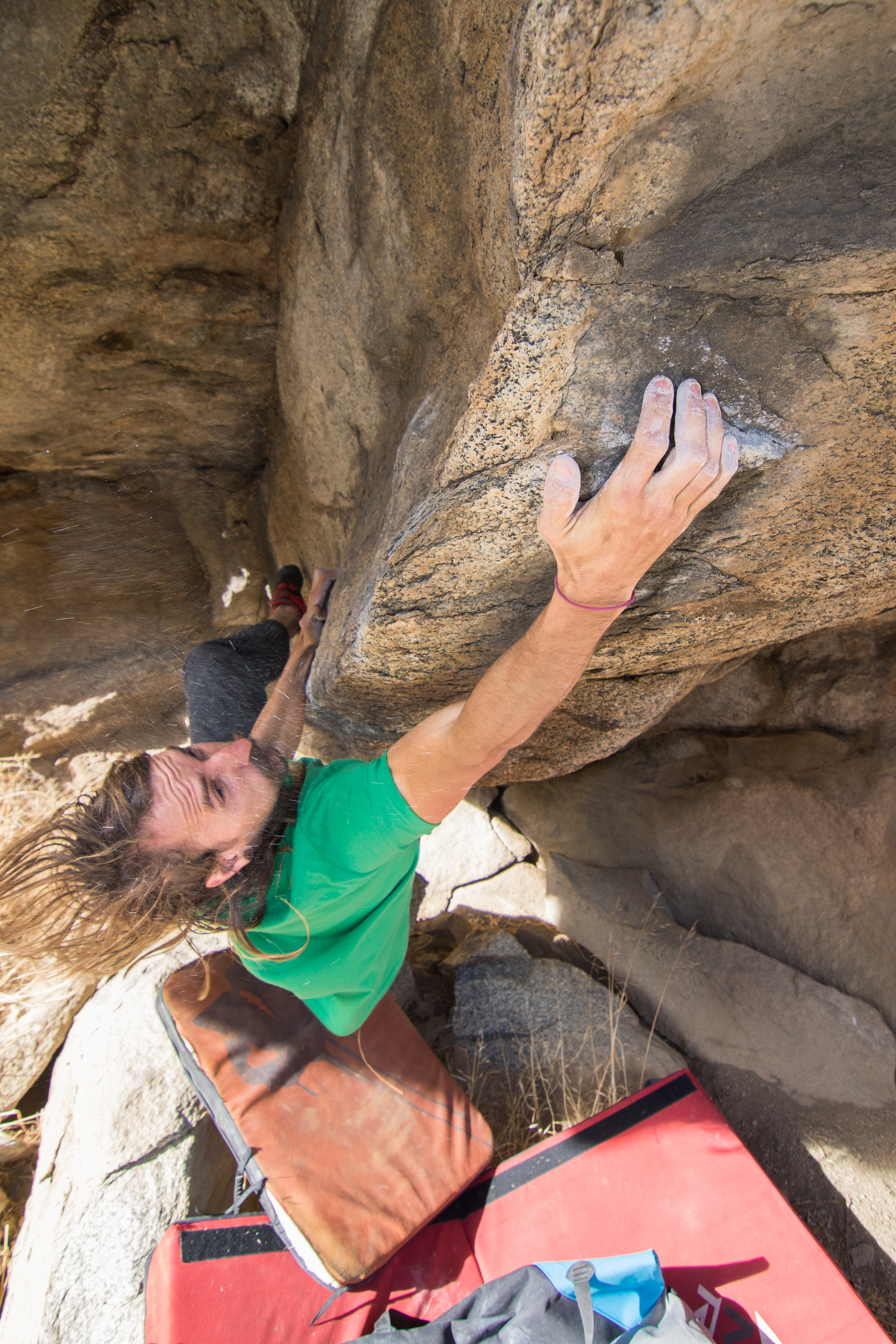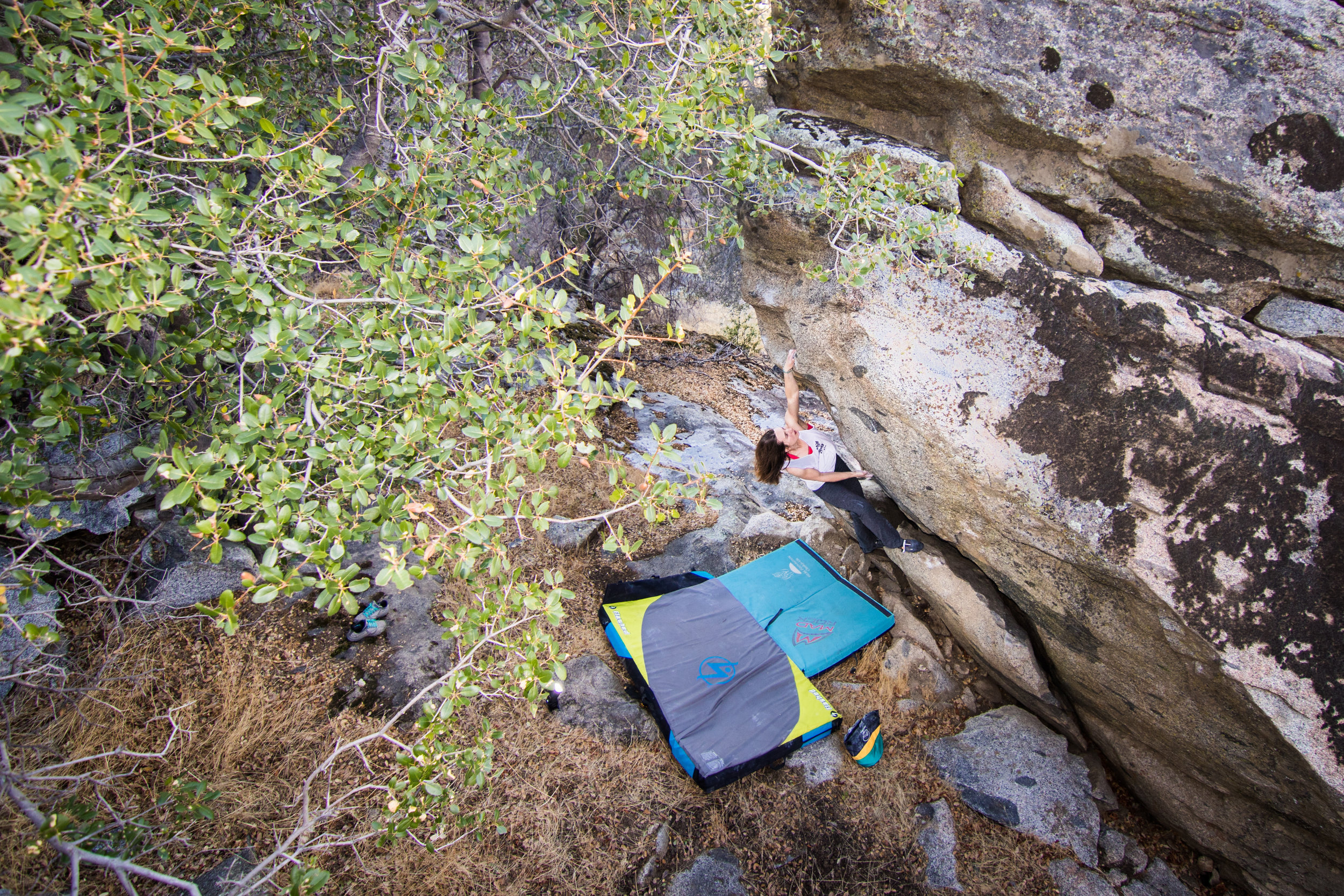Kern Canyon: Keeping Keen

Photos: Jean Michael Auffant
Your legs are just starting to get tired when you see it: Another rock jutting up beyond a small ridge of a grassy hillock. You take a breath and start towards it, your mind playing the same old game. Will this one be worth it? Or will it be the wild goose chase all over again, another rock that looks good from afar only to turn out too small, too chossy, or too featureless? This is an old conversation, one you’ve had with yourself many times, but you hope, and you walk on, your legs burning a little as you climb the hill. At the peak, you get your first clear view of the boulder, and your heart leaps a little, but you tamp down the excitement. Still too soon to say. In a few minutes, you are standing in front of it, touching the rock, feeling the holds, the potential line starting to take shape in your mind. This is it, you think.
You come back a few days later, this time armed with brushes, chalk, shoes and a pad. You start scrubbing off the moss, looking for features underneath. You brush the holds with chalk and slowly the rock starts to look like something else, like a line that is asking to be climbed. Then you put your pad down and strap your shoes on. You choose what appears to be a logical start hold, and you start working the moves through the holds you’ve already scoped. Maybe it climbs like you thought it would, or maybe, as is often the case, it climbs in a completely different way. Either way, you can’t look up a video online to see the beta. You are on your own here. You found this rock, and this line is yours.
Maybe you send the line that day, or maybe, preferably, you don’t. It turns out to be a challenge, and there is a move or two that you can conceive of but can’t quite stick. This is how an obsession starts. You go home and think about it, tell your friends about it, dream about it. You go back a few days later with fresh eyes and fresh ideas. This might do the trick, and you might work out all the moves. Or you don’t, and the still beta eludes you. You are now deep into the process of discovery that is development. Sometimes this part of the process is short, maybe a day or two. Sometimes it lasts years as you build your way up to the skills you need to send the line. Regardless of how long it takes, one day you find yourself atop the boulder, the process completed from beginning to end. It is a bittersweet moment. You are ecstatic and fulfilled, as you should be. But there is also a twinge of sadness at knowing that you have completed something that was, for a time, a part of you. You name the climb, you share it with friends, you feel happiness that they can enjoy this line too, but soon you are ready to begin searching again. Soon, you find yourself in the hills, watching the clouds go by and the leaves bristle in the breeze and the animals scurry away as you walk through the grass and the trees, chasing glimpse after glimpse of rock, hoping to find the next one.
This experience is becoming something of a rarity for climbers. So many of us spend our weeks in gyms climbing problems and routes set by others and spend our weekends and vacations climbing problems and routes established by others. There is definitely something to be said about the communal and historical aspect of the repeating experience; I have connected with many climbers over problems we love together, and I love being able to go climb a Fred Nicole FA, touching the history of my sport in a way other sports don’t seem to offer. But there is also something to be said of developing new lines, a depth of experience that is missed when simply repeating climbs. I think back to the times I spent (and will spend) developing boulders, and I can’t help feeling that I am getting a piece of climbing akin to what the pioneers of this life got to experience in a time when climbing was a fringe activity, something closer to exploration and creation than to fitness and style.
I learned to climb in a place that did not have a lot of climbers but that had a lot of rock. This might be an uncommon combination, but, because of it, development has been a part of my climbing from nearly the beginning. The pictures you see above are all of Kern Canyon, a place near where I learned to climb, and are all of boulders my friends and I developed throughout the last decade. Climbing has been going on in Kern Canyon for some time; there is even an old guide describing some routes and boulder problems, a punk-zine type of publication with hand drawings and sparse descriptions. We soon climbed that guide out and had to go look for our own rocks, our own lines. Very little of the overall potential was touched, and, for the intrepid and persevering climber, the potential was and is almost endless. In the process of searching, finding, cleaning, and climbing, I learned to connect with climbing on a level different than what I got in the gym or at the established spot, a connection predicated on the relationships between self and place, body and mind, matter and movement. These are lessons I still carry with me and hope to continually develop.
Based in Bishop, CA where he pursues black belts in: climbing, teaching, reading, writing, traveling, and whatever else captures his attention.

